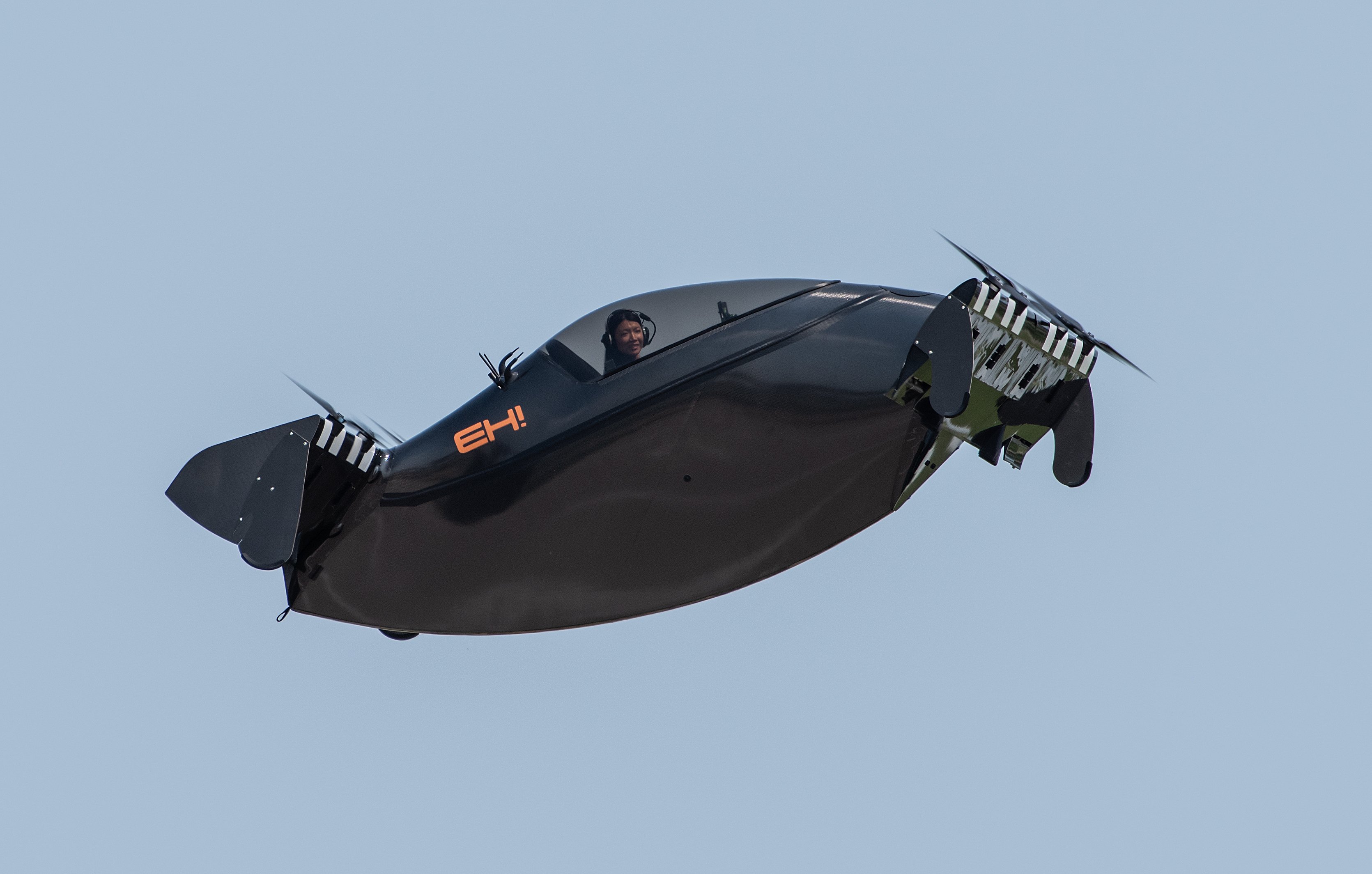Click Here to View This Page on Production Frontend
Click Here to Export Node Content
Click Here to View Printer-Friendly Version (Raw Backend)
Note: front-end display has links to styled print versions.
Content Node ID: 419148
Following a successful flight demonstration at last week's EAA AirVenture show in Oshkosh, Opener said it plans to begin selling its BlackFly single-seat eVTOL this fall. The all-electric aircraft will initially be offered under FAA's Part 103 rules for ultralight aircraft, with no pilot’s license required.
Owner-operators will be trained by the company via classroom, online, and simulator instruction. The California-based manufacturer displayed several of the simulators at the AirVenture event.
According to Opener, the BlackFly will have a range of 30 miles on a full charge, as well as a service ceiling of 1,200 feet, and a top speed of 62 mph. In accordance with the Part 103 rules, it can be flown only under visual flight rule (VFR) conditions.
Using a 240-volt quick charger, aircraft can be recharged in 20 to 30 minutes. A charge would take considerably longer with a 120-volt home charger.
To meet the Part 103 aircraft weight limitations, pilots can weigh no more than 200 pounds, and to fit into the aircraft can be no taller than six feet, six inches. Pilots sit beneath a clear canopy and, while there is no air conditioning due to weight constraints, the canopy can be cracked open slightly forward in flight to provide ventilation.
Opener declined to disclose precisely what will be in the avionics suite of production aircraft other than to say it would include a monitor linked to external cameras for landing assistance, GPS, radar, and other sensors. The cockpit displays will also show basic flight and aircraft data including altitude, climb rate, airspeed, as well aircraft and propulsion system health monitoring.
An initial small batch of aircraft—what the company calls the “founder’s series”—will be offered with an “elite” service package, according to Opener director of operations Kristina Melton. Data from this initial crop of customers will be used to further refine the product and Melton said Opener eventually hopes to offer BlackFly for a price comparable to a large SUV automobile. However, Opener declined to release an exact price.
The company might also eventually produce an autonomously-piloted unmanned cargo variant under the experimental category, Melton said, but right now it is fully engaged on the manned vehicle and production parts of the largely carbon-fiber aircraft are already coming off the line.
Opener has declined to disclose the size of the production facility or the number of company employees. However, Melton did say that production was fully vertically integrated, with Opener producing its own electric motors, battery packs, and battery monitoring systems that track each pack down to the battery cell level.
According to Melton, the BlackFly is designed with triple-redundant systems and intuitive, single-stick flight controls for pitch, direction, hover, and speed. Safety features on board include an automatic “return to home” function that automatically lands the aircraft within inches of the takeoff point and stability assist that maintains hover or cruise altitude. The stability system, which Melton called “tumble control,” automatically activates when the flight computers detect a flight regime “beyond what the aircraft thinks is controllable.”
For extreme emergencies, BlackFly’s nose is also fitted with a whole aircraft emergency ballistic recovery parachute system with dual redundant activation, and pilots will receive specialized training on how and when to use it. Melton said factory pilot training would emphasize the need to land when encountering aircraft anomalies or deteriorating weather conditions, as opposed to primarily relying on the ballistic parachute.
Triple redundancy is a theme that runs throughout the Blackfly’s design, from the flight controllers, pitot tubes, and elevons. The flight computers provide takeoff, landing, climbing, and turning assistance. Coordinated turns are computed and differential thrust is automatically added to compensate for winds and maintain heading. Melton said BlackFly had been tested in winds up to 30 mph, but that specific wind limitation data remained under development.
“There’s a huge amount of safety built into this aircraft,” she said. “The safety and testing far exceed Part 103 [requirements]. We are choosing to put these systems in place and the pilots who fly them will be trained by us.”
Opener’s focus on safety includes the battery packs, which are distributed throughout four separate locations on the aircraft, encased with thermal shielding to protect against the spread of fire, and modulated via an external bus. “You will not be able to take off if the flight controllers detect anything abnormal in any one of the batteries. In-flight, it will notify you if there is any change as well,” Melton explained. “The aircraft is always at a low voltage and everything stays inside.”
Following the aircraft’s public flight debut at the show in Oshkosh, Melton and her team are enthusiastic about BlackFly’s future. “The market is larger than what we can build right now and the potential applications are numerous. For now, we are focusing on the technology first, especially with this small-batch we are selling this fall, and we will be working with those customers to see what their experience is.”
